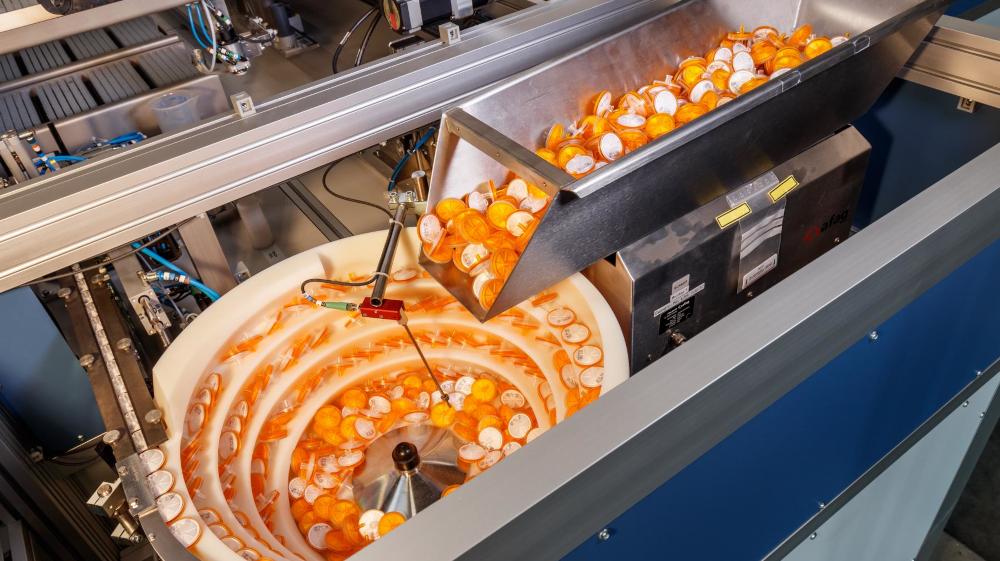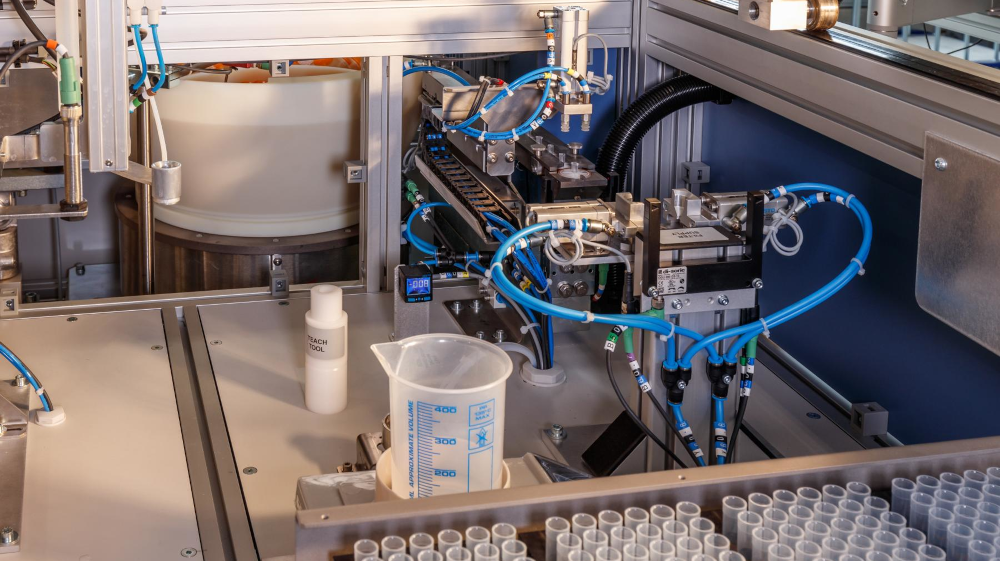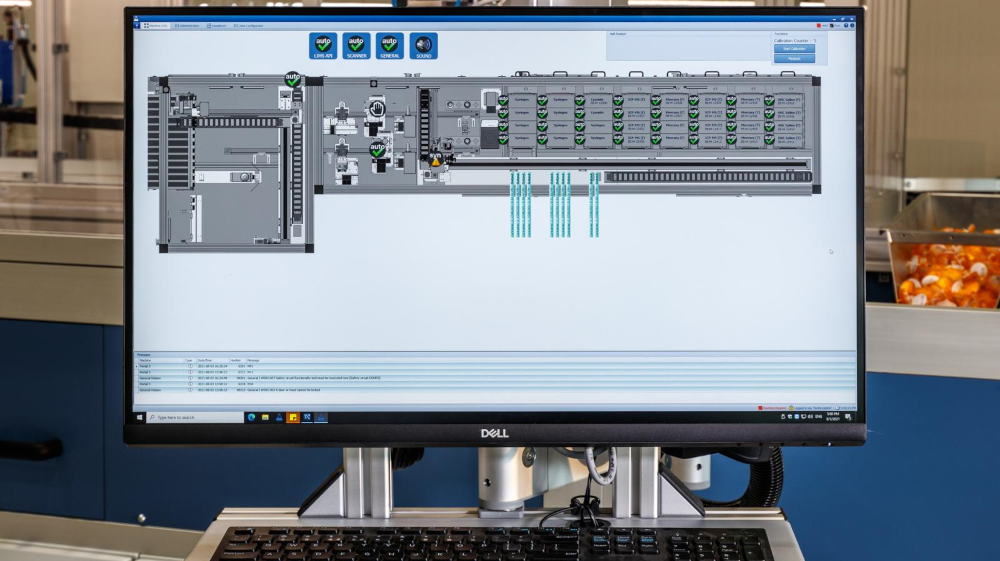
Automated Liquid Handling System (LHS)




The LHS is designed to handle incoming environmental water samples from a variety of different bottles, and can shake, pour, or syringe filter aliquots into various test tubes/containers for analysis. The system is divided into 2 halves, metal samples on the left and non-metal samples on the right, and can process around 600-800 samples/day per side. Operators simply load the sample bottles into the correct lane on the input conveyor belt, and it will prepare them automatically from this point onwards.
- Reduces/eliminates operator exposure to:
-
-
- manual handling
- dangerous substances/fumes
- repetitive actions
-
-
- Eliminates risk of sample mix-ups and result errors.
- Excellent precision and accuracy (no variance between operators)
- Frees up operators to perform more complex and valuable tasks.
- Allows unattended processing of samples after hours.
- Safety guarding and interlocks aligning to ISO 10218 – Robots and robotic devices, and AS4024 – Safety of Machinery, and Safety Integrity Level (SIL)/Performance Level (PL) rated as appropriate.
- Allows easy integration with AUTONOMA’s other modular automation in the future, without costly modifications or engineering.
Operators load the sample bottles into the correct lane on the input conveyor belt, and it automatically transports them for preparation. It can accept 4 different bottle sizes from 60ml to 500ml. When a bottle reaches the end of the belt, a high-speed XYZ gantry style robot picks it up and scans the bottle. The LHS communicates with the clients Laboratory Information Management System (LIMS) and is told what processing steps must be performed e.g. (number of aliquots, volumes, filtering etc). Alternatively, it can proceed based upon pre-programmed “recipes”. If the bottle isn’t recognised or the barcode cannot be scanned, then the system will reject it onto a dedicated reject belt for the operators to process manually.
Samples that can’t be filtered are flagged to the operator and rejected for manual processing. Filters are automatically sorted in the system, thereby eliminating the operators from having to perform this task manually and load them into racks. They can simply pour the box of filters into the sorter, and the system will orient them automatically, ready to be picked up by the syringe.
After the aliquot/s have been dispensed into the correct tubes/containers, the sample bottle is recapped and sent out to the operator for archiving or further processing. Once a rack is ready to be taken to the instrument, the operator is notified and can open the corresponding drawer and remove the correct rack of samples. A new rack with empty tubes/containers is inserted in its place so the system can keep running.
Designed for ease of use and ergonomic operation, the machine can be controlled via a built-in touchscreen and networked PC or accessed through a server-based virtual machine running HF Innovation’s LabDroid software.
It supports full integration with popular LIMS (Laboratory Information Management) platforms such as CCLAS, Starlims, LabWare, SampleManager, simplifying sample registration. Results can be exported in CSV, XLS, or TXT formats, with customizable layouts. API interfaces to LIMS are also possible.
| Dimensions | 8000 x 3000 x 2100mm [L x W x H] |
| Mass | ~4000 kg |
| Electrical requirements | 14A x 400V, 3 Φ, 50/60 Hz (can be modified upon request) |
| Pneumatic requirements | 50 L/min, 6 – 8 bar |
| Interface | Ethernet |
| Daily throughout | 600 – 800 samples per 24h |
| Options |
|



